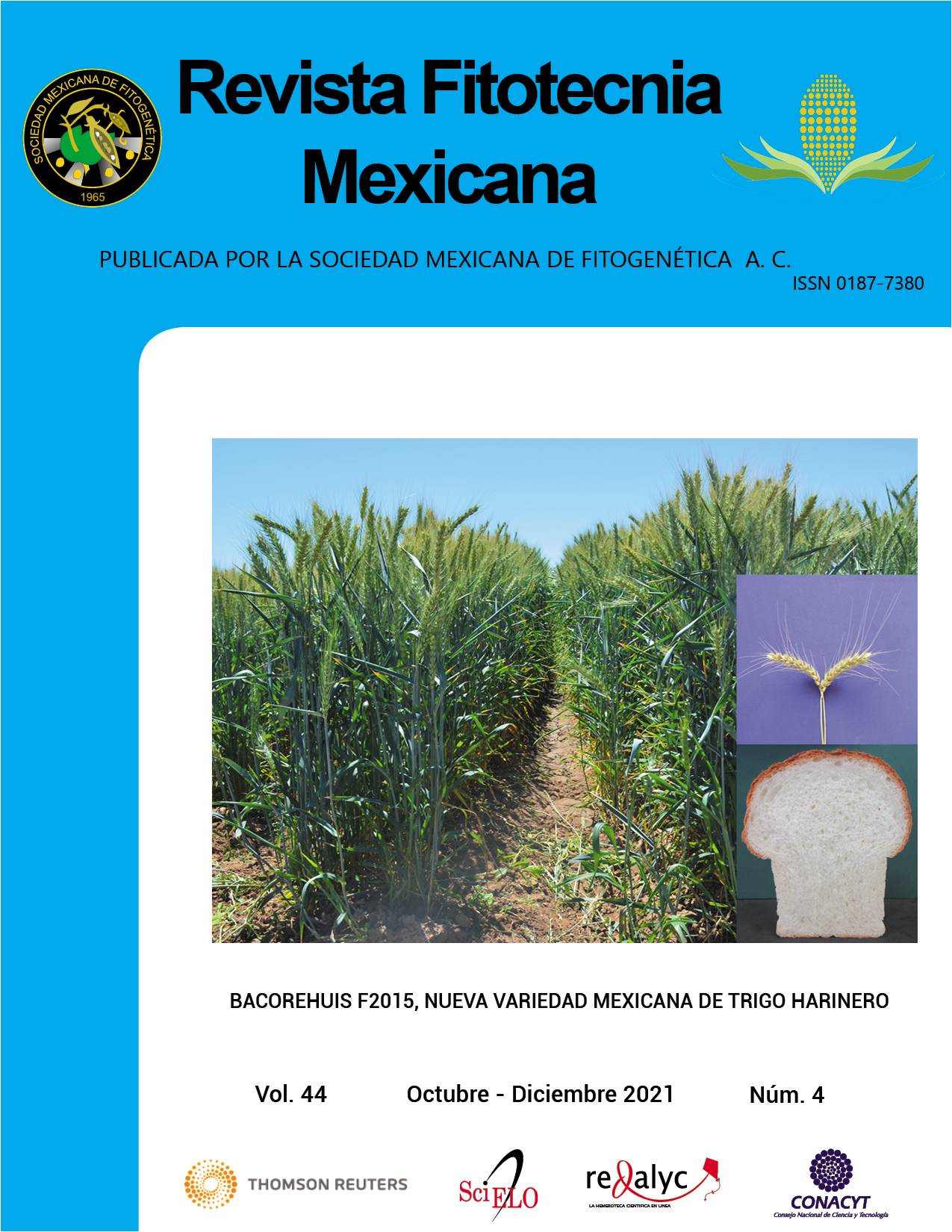AGRONOMIC EVALUATION OF FORAGE SORGHUMS AT THE BAJIO, MEXICO
Main Article Content
Abstract
Sorghum [Sorghum bicolor (L.) Moench] is a crop increasingly used as forage in Mexico; thus, it is important to have genotypes with favorable attributes. Twelve cultivars of forage sorghum (FS), ethanol (ES) and super sorghum (SS) were evaluated under irrigated conditions at the Bajio Experiment Station of the National Institute of Forestry, Agriculture and Livestock Research in Celaya Guanajuato, Mexico in the Spring-Summer agricultural cycle of 2018, with the aim of determining and comparing their agronomic potential. The analysis of variance showed highly significant differences between the evaluated treatments, which allowed differentiating the genotypes into late (ES), intermediate (SS) and early (FS) based on days to flowering, while in plant height the SS outperformed the other groups. In leaf length, SS and ES were statistically similar between them, and superior to FS. Regarding green biomass production, SS and FS produced a yield of 93.24 and 81.55 t ha-1 respectively and were higher than ES, which produced an average of 69.24 t ha-1. In dry biomass yield the SS were statistically superior to the other groups of sorghum with 20.89 t ha-1. Regarding sugar production, although it was low, the best material was SS-02 with 11.52 oBrix. Super sorghums outperformed ethanol sorghums in most of the variables evaluated.

